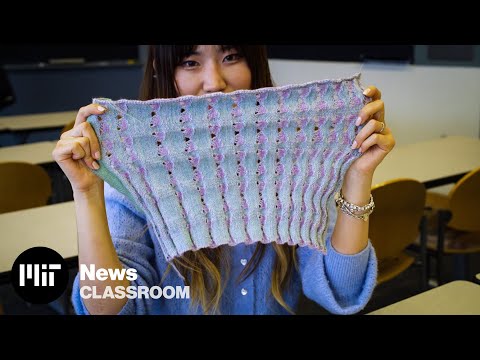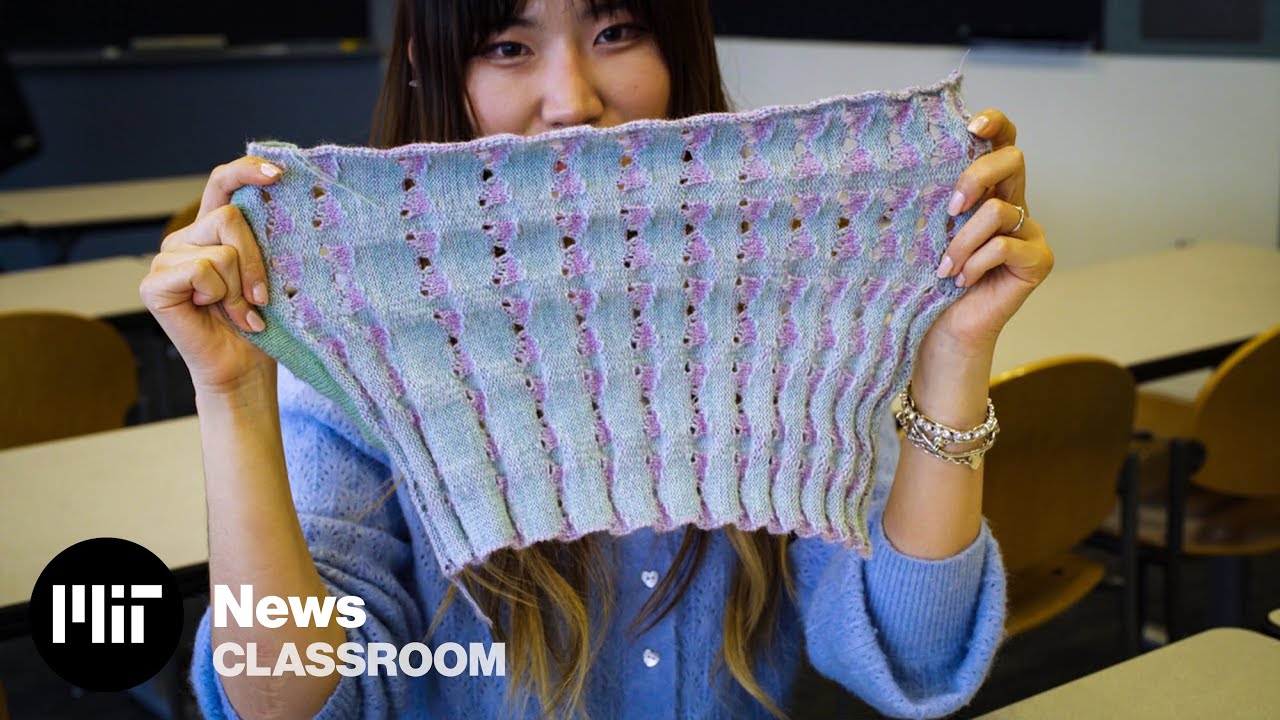Experience the future of textiles with cutting-edge science fabric! Discover a revolutionary blend of innovation and comfort that will transform the way you think about clothing. Our science fabric combines the wonders of advanced technology, meticulous research, and premium materials to create a fabric unlike any other. Imagine a fabric that adapts to your body temperature, keeping you cool during hot summer days and cozy during chilly winters. With its incredible breathability and moisture-wicking properties, this science fabric ensures you stay dry and fresh, no matter the conditions. Say goodbye to discomfort caused by static electricity, as this fabric is designed to minimize its effects, leaving you feeling confident and free to move. Its durability and resistance to wear and tear make it perfect for active lifestyles, ensuring your garments last longer. Whether you’re engaged in intense workouts or simply going about your daily routine, our science fabric provides unmatched flexibility and stretch, allowing you to move with ease. Elevate your wardrobe with this breakthrough fabric that merges science and style, offering you a futuristic clothing experience like no other!

The Science of Fabric: Exploring the Wonders of Innovative Textiles
Fabric is an essential part of our daily lives, serving as the foundation for our clothing, upholstery, and countless other applications. However, modern advancements have led to the development of science fabric, a revolutionary concept that combines cutting-edge scientific principles with traditional textile manufacturing. In this article, we will dive into the world of science fabric, exploring its various forms, benefits, and future possibilities.
The Origins of Science Fabric
Science fabric emerged as a result of the growing need for textiles that could offer more than just comfort and aesthetics. Scientists and engineers began experimenting with various materials and manufacturing techniques to create fabrics that possessed unique properties and functionalities. The convergence of technology and textiles gave birth to this new realm of fabric innovation.
The Different Forms of Science Fabric
Science fabric comes in several forms, each designed to cater to specific needs and applications. One of the most notable types is smart fabric, which incorporates electronic components to provide additional features. These fabrics can monitor vital signs, regulate body temperature, and even adjust their properties based on external stimuli. Another form of science fabric is biofabric, which utilizes living organisms or their byproducts to create sustainable and eco-friendly textiles. This form of fabric production offers an alternative to conventional methods that often rely on harmful chemicals and processes.
Benefits of Science Fabric
Science fabric offers numerous benefits that extend beyond those of traditional textiles. Firstly, smart fabrics enhance our comfort and well-being by actively responding to our body’s needs. For instance, clothing made from smart fabric can cool us down in hot weather or provide warmth in colder temperatures. Moreover, these fabrics have the potential to revolutionize healthcare by continuously monitoring a patient’s vital signs and transmitting data to medical professionals in real-time.
Additionally, biofabric presents a sustainable solution to the environmental challenges associated with conventional textile production. By harnessing the power of nature, biofabric eliminates the need for harmful chemicals and reduces waste. This not only benefits the environment but also creates opportunities for the development of circular economies, where materials are reused and repurposed instead of being discarded after use.
Future Possibilities and Innovations
Science fabric is an ever-evolving field with immense potential for future innovations. Researchers are constantly exploring new ways to enhance the functionality and performance of these textiles. For instance, scientists are working on creating fabrics that can generate electricity from the sun or body heat, thus powering electronic devices or sensors embedded within the fabric itself.
Furthermore, the integration of nanotechnology with fabric production opens up a vast array of possibilities. Nanofibers, which are fibers with diameters on the nanoscale, can be engineered to possess remarkable properties such as extreme strength, flexibility, and even antibacterial properties. These advancements could lead to the development of self-cleaning fabrics, durable textiles for extreme environments, or even protective clothing with built-in antimicrobial capabilities.
The Limitless Potential of Science Fabric
Science fabric is undoubtedly an exciting frontier in the world of textiles, with endless possibilities waiting to be explored. As technology continues to advance, we can expect even greater integration of science and fabric, resulting in textiles that not only meet our basic needs but also enhance our lives in unimaginable ways. From smart fabrics that adapt to our environment to biofabrics that promote sustainability, the future of fabric is boundless.
In conclusion, science fabric represents a remarkable fusion of scientific principles and textile manufacturing. With its various forms, including smart fabrics and biofabrics, it offers numerous benefits such as enhanced comfort, healthcare applications, and sustainability. As research progresses and innovations continue to emerge, science fabric holds the promise of transforming our perception of textiles and revolutionizing various industries. The possibilities are endless, and the future of fabric is undoubtedly a fascinating one.
Title: “Revolutionizing Computing: Unveiling the Future of Fabric Technology”
Computing Fabrics, also known as fabric computing or unified computing, represent a groundbreaking approach to information processing and data management. By interweaving multiple computing resources into a cohesive and dynamic fabric, this innovative technology enables unparalleled efficiency and performance in various computing environments.
In a fabric computing architecture, individual computing components, such as servers, storage devices, and networking infrastructure, are seamlessly interconnected. This interconnectedness allows for the pooling of resources, resulting in a highly flexible and scalable system. Through the utilization of intelligent software, the fabric intelligently distributes workloads across the available resources, optimizing utilization and enhancing overall computing power.
One of the key advantages of computing fabrics lies in their ability to simplify management and administration. By abstracting hardware complexities and presenting a unified interface, fabric computing streamlines operational tasks and reduces the burden on IT teams. This not only enhances productivity but also allows for rapid provisioning and deployment of applications and services.
Furthermore, fabric computing brings resiliency and fault tolerance to the forefront. With redundant components and built-in failover mechanisms, the fabric can dynamically adapt to failures, ensuring uninterrupted operation. This resilience makes fabric computing an ideal choice for mission-critical applications and environments where downtime is not an option.
Another significant benefit of fabric computing is its ability to optimize energy consumption. By consolidating resources and dynamically adjusting power usage based on workload demands, fabric architectures can significantly reduce energy costs and ecological footprints, aligning with sustainability goals.
As the computing landscape continues to evolve, fabric computing stands as a transformative technology that holds immense potential. With its ability to seamlessly integrate resources, simplify management, ensure resilience, and optimize energy consumption, fabric computing is poised to revolutionize the way we process information and shape the future of computing.
Video Source : Massachusetts Institute of Technology (MIT)
List of Science Fabric
Science Fabric
| Fabric Type | Composition | Properties |
|---|---|---|
| Nanotex | Blend of cotton and nanofibers | Enhanced durability, superior moisture-wicking, and quick-drying |
| Graphene-infused fabric | Graphene nanotubes integrated into textile fibers | Exceptional thermal conductivity, antibacterial properties, and electrical conductivity |
| Phase-changing textiles | Microencapsulated phase-changing materials | Regulate body temperature by absorbing and releasing heat |
| Self-cleaning fabric | Coated with nanoparticles | Repels dirt and stains, eliminates odor-causing bacteria |
Science fabric represents the forefront of textile innovation, combining cutting-edge research and advanced materials to revolutionize the way we think about clothing. From performance-enhancing properties to next-level functionality, these fabrics offer exciting possibilities for various applications.
Nanotex, a fabric type incorporating nanofibers into cotton, boasts remarkable durability, making it ideal for athletic wear. Additionally, it possesses exceptional moisture-wicking capabilities, swiftly drawing perspiration away from the body, ensuring dryness and comfort during physical activities.
Graphene-infused fabric takes advantage of the extraordinary properties of graphene nanotubes. This revolutionary material exhibits outstanding thermal conductivity, ensuring effective heat dissipation, while also providing antibacterial attributes, maintaining hygiene and reducing the risk of infections. Furthermore, its electrical conductivity opens up possibilities for wearable technology integration.
Phase-changing textiles take the concept of temperature regulation to a new level. By utilizing microencapsulated phase-changing materials, these fabrics absorb and release heat as necessary, helping to maintain an optimum body temperature in various conditions. Whether it’s keeping warm on a chilly day or staying cool during intense physical exertion, these textiles adapt to the wearer’s needs.
In the quest for fabric that stays clean and fresh, self-cleaning fabrics have emerged. These fabrics are coated with nanoparticles that repel dirt and stains, ensuring a cleaner appearance for longer. Moreover, the nanoparticles eliminate odor-causing bacteria, enhancing the overall hygiene of the garment.
Science fabric is pushing the boundaries of what we expect from our clothing. With ongoing research and advancements, these innovative textiles offer exciting possibilities for performance, comfort, and functionality in various fields ranging from sports and healthcare to everyday wear.

